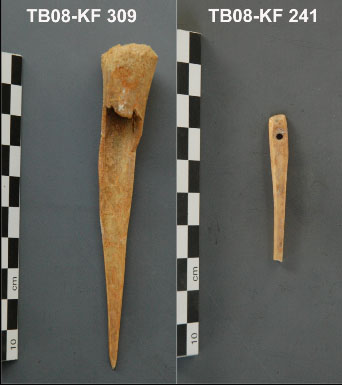
The predominant small find category is pottery. During the first three campaigns some 45,000 sherds were classified according to ware,
and the 10% of diagnostics were typed and drawn.
Drawings of Pottery
Among the pottery, the wheel-turned fine ware with
exclusively mineral temper predominates (90 %). These vessels, of greenish,
reddish or, in rare cases, grey ware, are typical for the Sapalli Culture. They are also our best criterion for dating the site, since not
many C14 analyses have be carried out so far. According to our reading of the pottery, Tilla Bulak was settled in the 20th and 19th
centuries B.C.
The astonishing homogeneity of the Sapalli Culture pottery corpus raised the question whether these had all been produced locally,
or whether they were imported from one or several sites specializing in ceramic manufacturing (for example sites like Dzarkutan,
where numerous pottery kilns attest to the existence of a lively industry). The discovery of equipment for the running of two-chambered
kilns during the last campaign at Tilla Bulak appears to have settled this issue in favor of local production.
The second most common category of artefacts on site are those of stone. Grinding stones, mortars and hammer-stones were produced
mainly of basalt and granite, while arrowheads and blades were made of flint. The origin of the raw materials has not been determinded.
reddish or, in rare cases, grey ware, are typical for the Sapalli Culture. They are also our best criterion for dating the site, since not
many C14 analyses have be carried out so far. According to our reading of the pottery, Tilla Bulak was settled in the 20th and 19th
centuries B.C.
The astonishing homogeneity of the Sapalli Culture pottery corpus raised the question whether these had all been produced locally,
or whether they were imported from one or several sites specializing in ceramic manufacturing (for example sites like Dzarkutan,
where numerous pottery kilns attest to the existence of a lively industry). The discovery of equipment for the running of two-chambered
kilns during the last campaign at Tilla Bulak appears to have settled this issue in favor of local production.
The second most common category of artefacts on site are those of stone. Grinding stones, mortars and hammer-stones were produced
mainly of basalt and granite, while arrowheads and blades were made of flint. The origin of the raw materials has not been determinded.
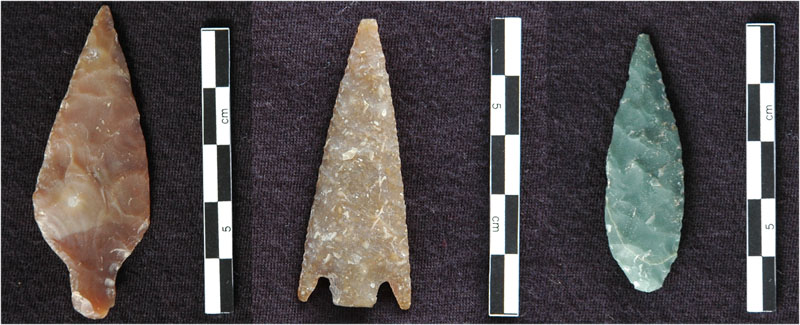
Arrowheads
Hammer-stones
Spindle whorls of clay or terracotta and bone awls are
among the large group of household tools.
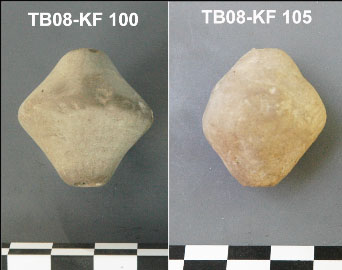
Spindle whorls
Bone awls
In settlement contexts metal objects are usually rare. In Tilla Bulak some fragmentary bracelets, dress pins and cosmetic tools have
been preserved. The raw materials for these objects also had to be imported, probably from today's Afghanistan, across the Oxus
(Amu Darya) river.
All artefacts of animal bones and antler are, by contrast, of local origin. The most spectacular finds so far are two antler axes with
rectangular shaft holes. They are of a rare type, known so far only from a few rich male graves in Southern Central Asia, and are
therefore considered to be signs of social status or prestige.
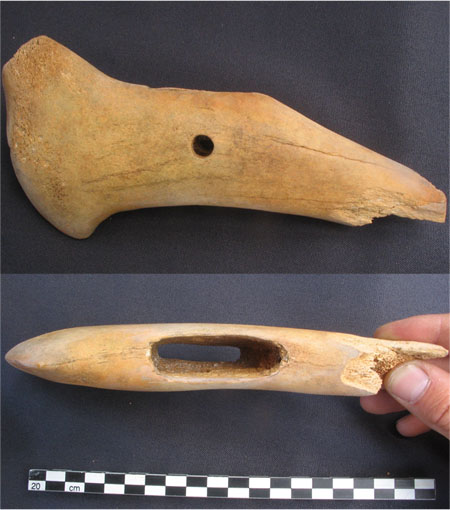
Anler hax
Seals and amulets were made of a range of materials. Their interpretation is not so straightforward as the term ‘seal’ would imply,
since seal impressions are practically unknown from the Sapalli Culture, so their use as seals seems somewhat doubtful. Our
doubts were confirmed by a rosette-shaped bronze-'seal': It belongs to a group of compartmented seals typical of the Sapalli Culture.
Impressions of similar pieces on vessels are known from Iran and Turkmenistan. The piece from Tilla Bulak shown below has inlays of
dark wood, which must have created a nice contrast with the originally brightly polished metal, but at the same reducing its usefulness
for making a clear and distinct seal impression.
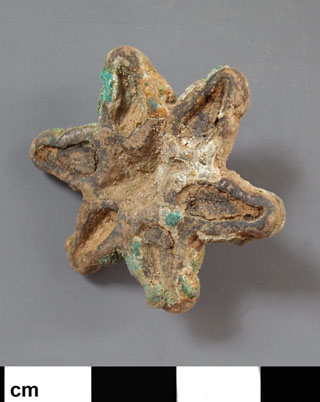
Metal seal
Two other finds are quite unique to our site: a large alabaster seal, measuring 8 cm in diameter, with the depiction of a mythical
creature and a small seal made of wood. Wooden seals have not survived from any other Bronze Age site in Central Asia.
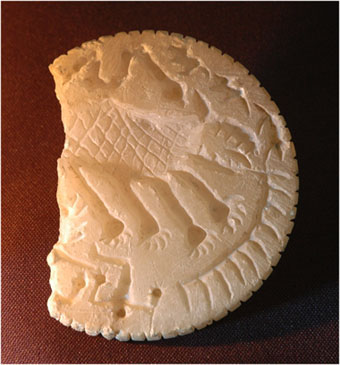
Alabaster seal
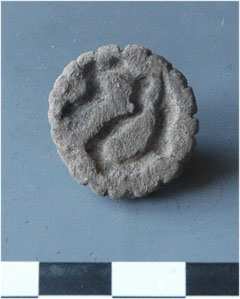
Wooden seal
Based on the analyses of faunal and animal remains, we
expect to gain insights into the lifeways of the inhabitants of Tilla Bulak,
their food resources (grain and animal bones) and the environmental conditions under which they operated (macro-botanical
material and determination of wood species).
their food resources (grain and animal bones) and the environmental conditions under which they operated (macro-botanical
material and determination of wood species).
